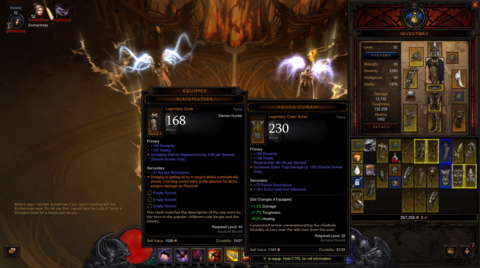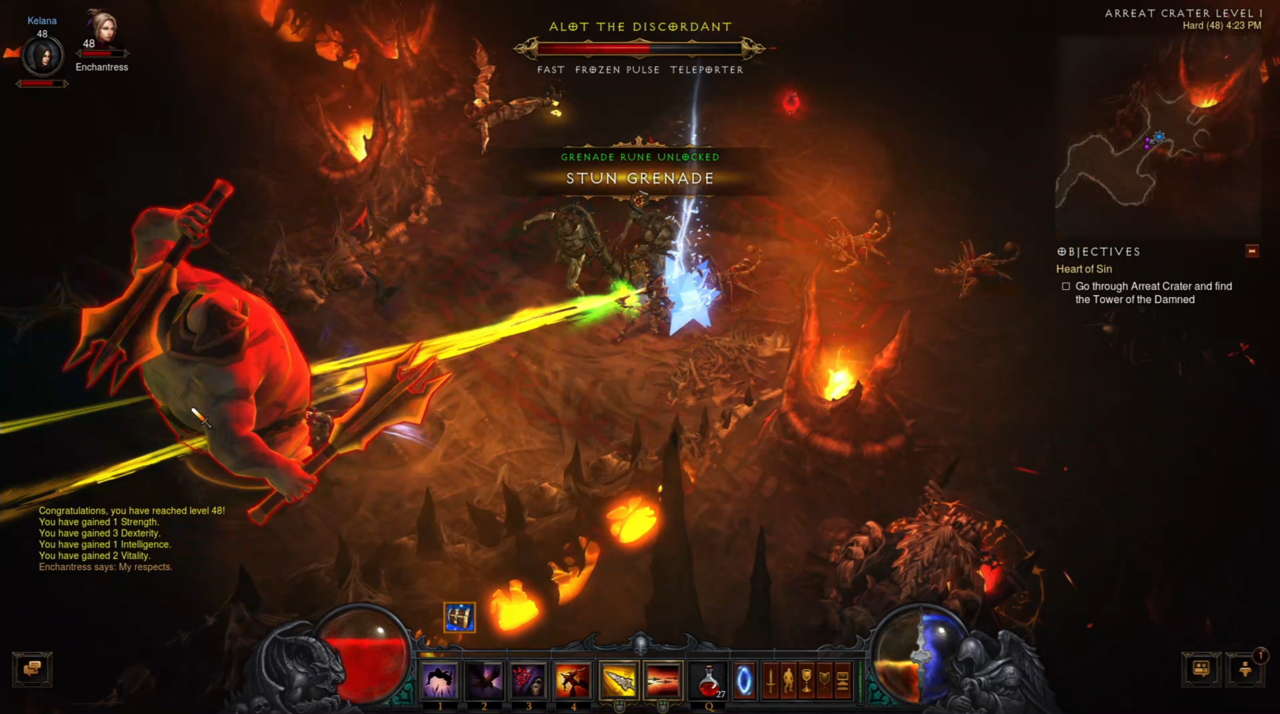Much has changed since we reviewed Diablo III at its launch in May of 2012, both in the game itself and in the PC gaming landscape. Now, those looking for great multiplayer hack-and-slash dungeon crawls have more options, like the colorful and appealing Torchlight II and the deep, grim, free-to-play Path of Exile. With these great games on the market that scratch the same itch, Diablo III is less essential. However, thanks largely to significant changes made in a recent patch in advance of the upcoming Reaper of Souls expansion, Diablo III is a better game now than it's ever been, and is a worthy contender for your time if you're looking to kill legions of monsters and score some sweet loot.
The recent changes to Diablo III are dramatic and immediately noticeable. After patch 2.0.1 was released on February 25, I took my level 44 witch doctor out for a spin for the first time in ages, and after playing for about an hour, I'd already collected rare and legendary weapons and armor that far outstripped anything I'd been using before. Gear is better now not only in terms of its base stats, but also in terms of its other characteristics. Whereas before, I tended to stick with the same few skills throughout the game, now, gear encourages me to switch things up periodically by offering hefty percentage bonuses to the damage done by a specific skill.
Some characteristics aren't about increasing an item's power but about doing other nifty things; a colleague of mine was able to equip a powerful level 60 weapon at level 47 because one of its attributes reduced its level requirement by 13. You find cool, useful stuff a lot more frequently now, which makes the whole process of collecting loot more exciting and rewarding, and the smart ways in which this loot sometimes encourages you to change up your build make for a more varied game. And with the controversial auction house now offline and with restrictions on trading legendary gear, you have to earn the best stuff yourself, which is the way it always should have been.
After advancing a few levels on the normal difficulty and never breaking a sweat, I upped things to hard to take advantage of the 75 percent bonus to experience and gold that comes with the increased challenge. This made for a more involving experience; on normal I could mindlessly slaughter most foes, but on hard I had to focus on what I was doing and use my skills in concert with each other to overcome some of the tougher encounters, marking enemies for death, setting up my sentry turret, and vaulting out of the way of enemy attacks. The difficulty system has been tweaked significantly since the game's release, with monsters now scaling to your character's level. As you get better at the game and improve your character's equipment, you're incentivized to up the difficulty to reap greater rewards in terms of gold, experience, and gear, and for the satisfaction of overcoming greater and greater challenges. I'm now facing the still-tougher enemies of the expert level.

After once again vanquishing Diablo and starting over from act one, I hit the current level cap of 60 (which Reaper of Souls will increase to 70) and started earning paragon experience. Though the paragon system was introduced way back in patch 1.0.4, this was my first experience with it. I'm not usually much of an endgame player; once I've completed the story in a game, there's not much appeal for me in continuing to play purely for the sake of earning better loot or increasing my character's power. But I can see the appeal in earning paragon levels. With each level you earn, you get a point to spend on one of four tiers: improving your core attributes, your offensive or defensive abilities, or matters of utility, like resource costs and the amount of gold you find. Though you can earn paragon experience with a character only once that character has hit level 60, the paragon points you earn are given to each of your characters. Previously, Diablo III offered little in the way of opportunities to continue improving your character after a certain point, but now paragon levels, along with the prospect of better and better loot on harder difficulties, give you concrete benefits for continued play.
Fundamentally, Diablo III is still the same experience it's always been. You click on monsters and press a few keys on your keyboard to unleash attacks to kill tons of monsters to collect heaps of gold and loot to become more effective at killing tons of monsters, and while the loot system has gotten a major overhaul, skills and runes work like they always have. The offensive skills of each class look powerful and feel empowering, movement is fluid, and the action is fast and responsive. Though its core mechanics are commonplace, Diablo III creates a sense of drama that helps it stand out. In the third act setting of Bastion's Keep, massive demons claw their way onto the battlements, and as towering statues crumble around you in the high heavens, the turmoil supports the aim of the halfhearted narrative to make you feel like an eternal conflict between the angels and the legions of hell is culminating and that you're right in the middle of it.
And of course, Diablo III is still at its best when you join forces with other players, combining close-quarters abilities and ranged attacks, crowd control abilities, and area-of-effect damage. Unfortunately, Diablo III still requires you to be online at all times, even if you're content to play by your lonesome, and this sometimes causes problems. I've run into severe latency issues on a few occasions when playing the game recently, and though my character hasn't perished, combat in these instances has been completely unmanageable.

But this has been a rare occurrence throughout the 20 hours or so that I've spent playing the game since picking it back up after the recent patch, and because loot is such a central part of the Diablo experience, the significant improvements to Diablo III's loot system have resulted in a significantly better game. If you played Diablo III when it was first released and haven't been back to it in a while, you'll immediately be pleased to find that the loot you're collecting is consistently better and consistently more suited to your chosen class. If you haven't played Diablo III before but you're thinking of diving in before the expansion is released, you're in luck: taking on the minions of hell has never been more rewarding.